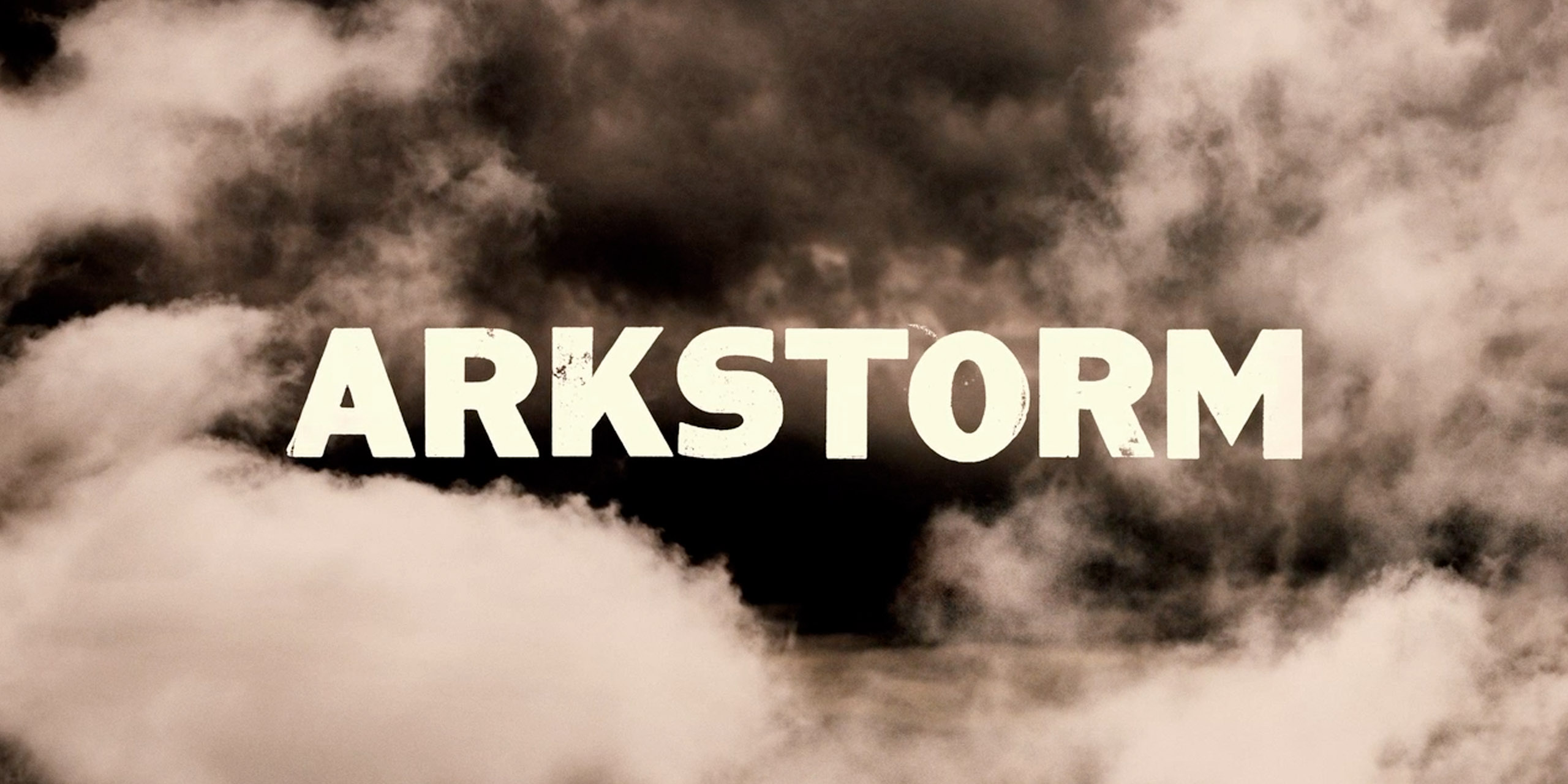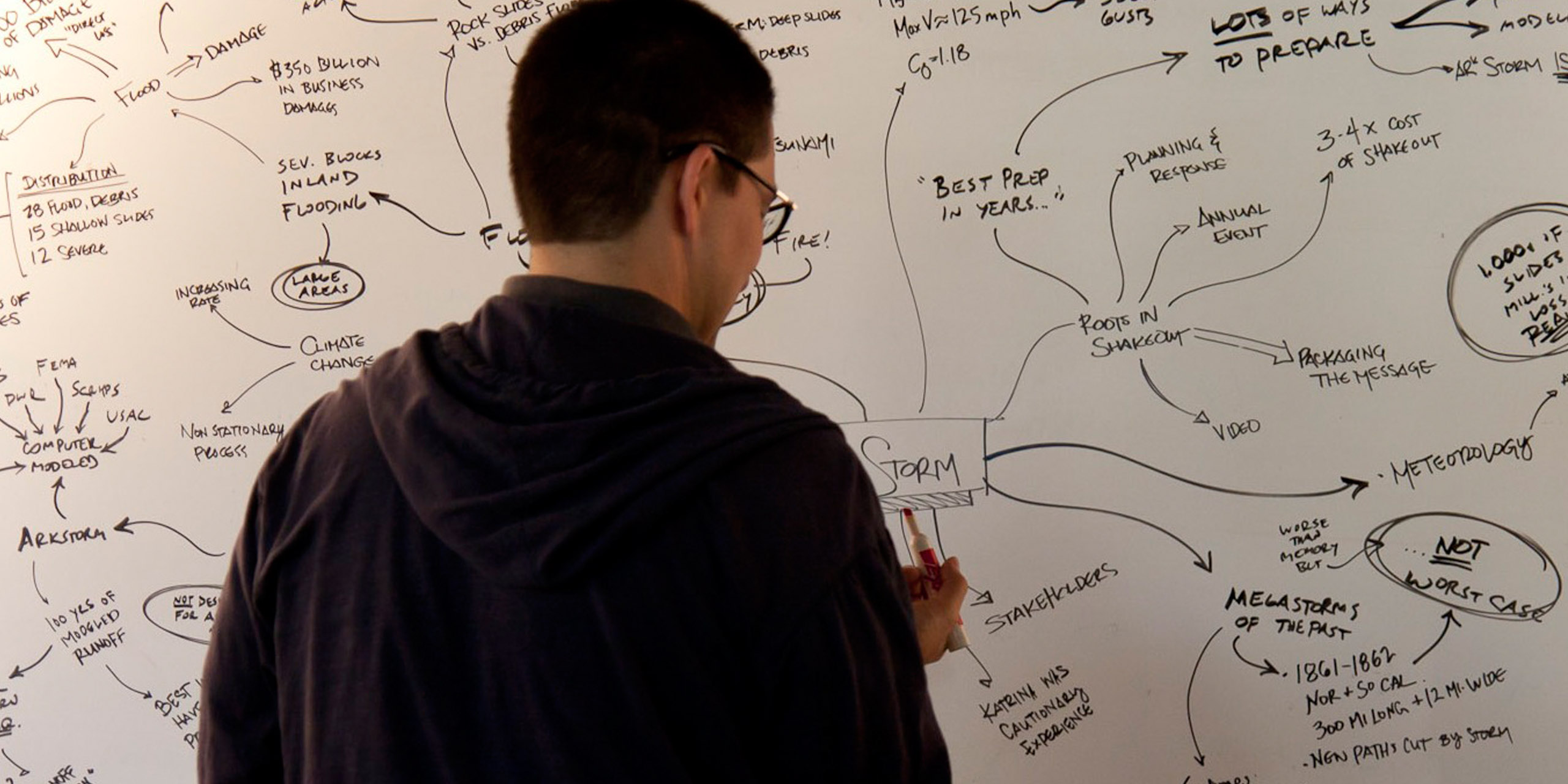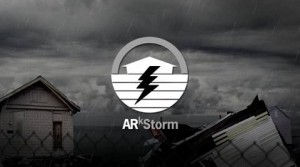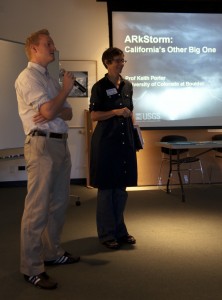The ARkStorm, a short film
This film explores the very real potential for a devastating and catastrophic winter storm in California that scientists are calling “The ARkStorm.”

Summer 2010 – Spring 2011
This Designmatters multi-faceted collaboration with USGS engaged decision-makers in potent design-led strategy sessions and produced public awareness tools for the ARKstorm scientific scenario.
“We think this event happens once every 100 or 200 years or so, which puts it in the same category as our big San Andreas earthquakes. The ARkStorm is essentially two historic storms (January 1969 and February 1986) put back to back in a scientifically plausible way. The model is not an extremely extreme event.”
—Dr. Lucile Jones, Chief Scientist, USGS Multi-Hazards Demonstration Project and Architect of the ARkStorm Scenario
“The process was exciting. Participants were engaged throughout the day. They were doodling and diagramming and laughing and smiling. We had moved the dial from a relatively quiet, reserved room of experts that didn’t know each other well, to a room full of potential relationships and possibilities for the future.”
—Sherry Hoffman, Faculty, Environmental Design, Co-lead Facilitator, ARkStorm DesignStorm

 Over the span of six months during fall 2010 and spring 2011, Designmatters partnered with the Multi-Hazards Demonstration Project (MHDP) of the United States Geological Survey (USGS) to help design a series of interconnected outcomes: a communication strategy and public awareness film, a cross-sector emergency planning meeting for decision-makers, and a Summit that unveiled a scientific scenario which models a California hypothetical storm that would cause more than an initial 300 billion dollars in damage, the ARkStorm Scenario.
Over the span of six months during fall 2010 and spring 2011, Designmatters partnered with the Multi-Hazards Demonstration Project (MHDP) of the United States Geological Survey (USGS) to help design a series of interconnected outcomes: a communication strategy and public awareness film, a cross-sector emergency planning meeting for decision-makers, and a Summit that unveiled a scientific scenario which models a California hypothetical storm that would cause more than an initial 300 billion dollars in damage, the ARkStorm Scenario.
 The USGS Multi Hazards Demonstration Project’s (MHDP) second full scenario, called ARkStorm, addresses massive U.S. West Coast storms analogous to those that devastated California in 1861–62. Storms of this magnitude are projected to become more frequent and intense as a result of climate change.
The USGS Multi Hazards Demonstration Project’s (MHDP) second full scenario, called ARkStorm, addresses massive U.S. West Coast storms analogous to those that devastated California in 1861–62. Storms of this magnitude are projected to become more frequent and intense as a result of climate change.
The MHDP assembled experts from the National Oceanic and Atmospheric Administration (NOAA), USGS, Scripps Institute of Oceanography, the State of California, California Geological Survey, the University of Colorado, Federal Emergency Management Agency (FEMA), the National Center for Atmospheric Research (NCAR), California Department of Water Resources, California Emergency Management Agency (CalEMA) and other organizations to design the large, but scientifically plausible, hypothetical storm scenario that would provide emergency responders, resource managers, and the public a realistic assessment of what is historically possible.
To learn more about the key findings of the scenario, see here.
Idea Generation + Synthesis + Innovative Results
Under the leadership of Product Design Department Chair Karen Hofmann, Art Center has developed a methodology for design-centric innovation workshops or charettes that are held on an ongoing basis, facilitated by the Educational Partnerships office, and engage students and faculty for short, intensive bursts of creative sessions with outside partners. These are typically organized around a particular topic, technology or specific challenge presented by the sponsor company or organization.
With ARkStorm, Designmatters had the opportunity to partner with the Product Design Department in a social innovation focused DesignStorm that had a two-fold objective:
1. Enrich communication and collaborative processes between a key group of stakeholders and participating organizations
2. Yield tangible, action-oriented results for consensus-building in preparation of the ARkStorm Summit
The one-day DesignStorm was held in October 2010 and included a broad range of participants (emergency managers, structural engineers, meteorologists, business leaders, geologists, social scientists, and policy makers).
Process
The day was striking for its high-intensity, and ability to convene cross-disciplinary organizations in a potent dialogue on the topic of ARkStorm strategies for preparation, mitigation, response and recovery.
Participants worked in short, concentrated sessions throughout the day, in teams with Art Center faculty and student “visualizers,” and in pre-assigned groups designed to maximize expertise on the following key issues around ARkStorm:
These faculty-led sessions used design-based methods for crafting future scenarios and possible solutions that could be driven by the stakeholders in the room. Participants were asked to arrive open-minded and ready to explore new conceptual ground, in an undistracted and highly-focused, immersive setting.
Six hours and over 1000 ideas later, with 100 plus critical topics identified, the Designstorm ended. With a library of ideas created, vital connections discovered, a priority list for topics developed, momentum was strong going into the January ARkStorm.

In addition to the strategy sessions represented at the charette and the Summit, the Art Center team contributed several key communication tools toward the initiative, including:
